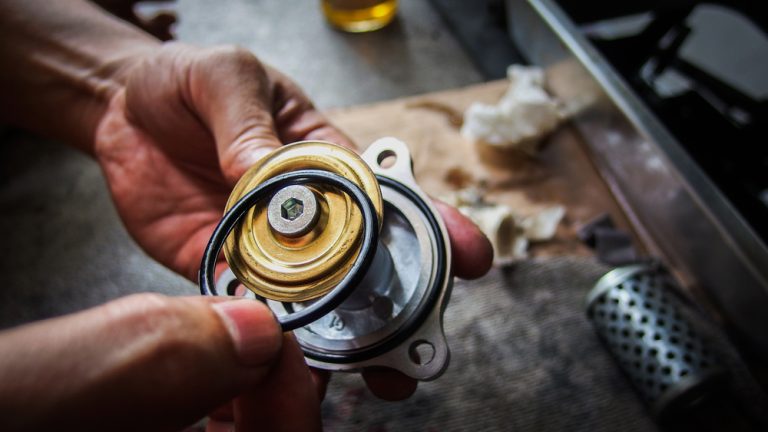Friction is one of the main enemies of O-rings. Friction can cause cracks, splits, tears, and wear on rubber, even with the best lubricants and materials. Eventually, O-rings will give out.
The key is to reduce friction as much as possible. As such, we’ll examine friction factors that play into your O-rings.
Friction Categories
Friction is divided into subcategories concerning industrial processes.
Running friction occurs when a force directly opposes a force moving forward and compresses the O-ring. Running friction tends to move an O-ring into more of a D-shape than an O-shape, even for an instant. That can throw off a seal if the running friction is too much. This force depends on the force exerted by compression and the system pressure against the O-ring to distort its shape.
Breakout friction happens when a process starts. It largely depends on the length of the cycle as to how often an O-ring undergoes breakout friction. Other factors with breakout friction at the time of contact include the surface finish on the metal, hardness of the rubber, and squeeze on the O-ring. How much breakout friction happens per cycle depends on the length of time the surfaces of the meal and the seal have been in physical contact at rest.
Wear, or the gradual breakdown of the O-ring’s surface. This often happens due to a sliding force or compression force that slowly removes small amounts of material from the surface of the O-ring over time. Eventually, enough material wears away to cause breakage.
Friction Factors to Pay Attention To
After the friction subcategories, you must also examine friction factors to reduce how this force can cause wear and tear on your O-rings during your industrial operations.
Unit load. This is the squeezing force on an O-ring for dynamic seals. It’s the compressive force and the number one factor to pay attention to for friction.
Metal surface finish. A softer finish and softer metals are actually worse for friction on O-rings unless the O-ring hardness is too high when dealing with a sliding motion. If you can, avoid soft metals against O-rings like aluminum, brass, bronze, and some stainless steel when sliding is the primary motion happening with your O-rings.
Durometer refers to the hardness of elastomers or plastics. Anything over a durometer of 70 Shore A (on a scale of 0 to 100) may have too much friction.
Speed of motion is how fast your assembly moves. Speed affects how long the O-ring contacts other surfaces.
O-ring cross-section discusses the thickness of the O-ring, which affects how much material comes in contact with the sides and any dynamic sealing forces.
Pressure can affect friction from any angle, but mostly when a dynamic seal closes.
Lubrication can come from many sources, including dry film, oil, and grease.
Temperature changes the forces acting on O-rings, with heat being worse for friction since friction generates heat.
Groove width alters friction based on how much the O-ring is squeezed due to the surrounding materials.
The diameter of the bore or rod can increase pressure on an O-ring by rubbing up against it as it slides in and out.
A surface finish on the O-ring changes the friction based on the type and thickness of the finish.
How to Alter Friction Factors for the Least Friction Possible
When you examine your industrial processes, we suggest altering the following factors to decrease friction for your O-rings:
- Decrease unit load on the O-rings to lessen the weight that pushes up against them. Aim for a surface finish of 64 to 125 RMS for metal, and get that number as low as you can if metal is in play.
- Decrease durometer, or the hardness of the O-ring. More flexible substances have less wear.
- Increase the speed of motion because slower speeds mean longer contact with O-rings.
- Decrease the cross-sectional area of an O-ring to lessen the contact surface area.
- Use lubrication to reduce the coefficient of friction.
- Increase the temperature of the environment to foster less rigidity.
- Increase the groove width to reduce the force needed to install an O-ring.
- Decrease the diameter of a bore or rod to reduce rubbing forces.
- Increase the surface finish of an O-ring to have more material on it.
Who can supply my company with O-ring surface treatments?
EZ Coating can deliver O-ring coatings that beat PTFE (Teflon) in several important factors, like the coefficient of friction and abrasion resistance, for your industrial equipment, heavy machinery, and manufacturing equipment.
Contact us for more information or if you need a test sample. We’ll respond within 24 hours.

